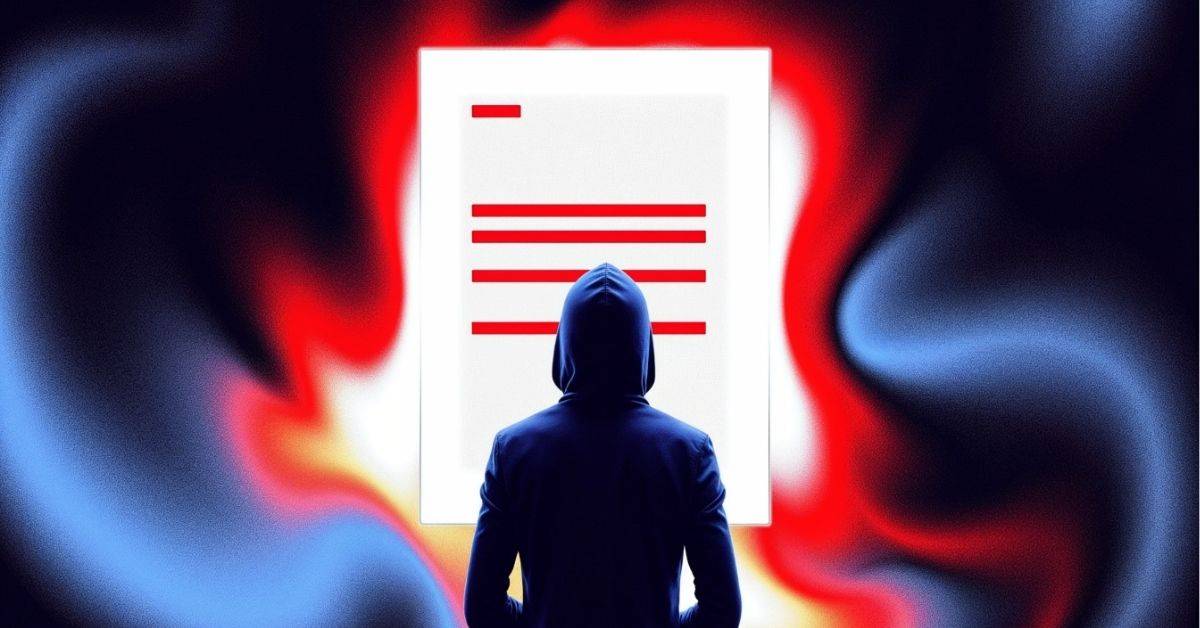Table of Contents
You’ve seen it, right? That perfectly polished paragraph in a blog post, a social media caption that’s just a little too generic, or an email that feels… constructed. It’s clean, it’s grammatically flawless, but it lacks a certain spark. A soul. My architect brain, trained to see the structure and patterns in everything, immediately starts to wonder: was that written by a person, or a clever algorithm?
Welcome to our new reality. With AI that can write essays, code, and marketing copy, the line between human and machine-generated text is getting blurrier by the day. And right alongside this boom, a whole industry of AI detection tools has emerged, promising to be the definitive AI checker that can separate the human from the bot.
But can they?
As a solo architect, I spend my days focused on design. But a huge part of my job—and my passion—is communication. I’m designing websites, writing proposals, and crafting social media posts to connect with clients. Authenticity is my foundation. So, when these AI content detector tools started popping up, I was intrigued not just as a writer, but as a designer. I see them as a new kind of blueprint analysis. They don’t just look at the surface; they try to reveal the underlying structure of a piece of text.
But just like a blueprint can be misleading without an expert eye, the results from an AI scanner can be dangerously misunderstood. So, let’s get into what these tools are, how they work, and the very human question of whether we should even trust them.
The Blueprint of a Bot: How AI Detection Works
At its core, an AI detection tool isn’t reading for meaning or emotion. It’s a sophisticated pattern-finder. Think of it like this: when I review a set of construction drawings, I’m looking for consistency, adherence to building codes, and standard engineering practices. There’s a certain logic and predictability to it.
An AI text detector does something similar with language. It analyzes text based on a couple of key metrics you’ll hear a lot about:
- Perplexity: This measures how predictable a sequence of words is. Human writing is wonderfully messy. We use weird phrases, jump between simple and complex sentences, and make surprising word choices. Our perplexity is high. AI models, trained on vast datasets of existing text, are designed to choose the most probable next word. This makes their writing incredibly smooth, logical, and often, very predictable. Their perplexity is low. It’s the difference between a hand-laid stone wall, with its unique, irregular stones, and a wall of perfectly uniform, mass-produced bricks.
- Burstiness: This refers to the rhythm and flow of sentence structure. As humans, we write in bursts. We might fire off a few short, punchy sentences, followed by a long, winding one that explores a complex idea. It creates a dynamic rhythm. Early AI models struggled with this; their sentence lengths tended to be much more uniform, lacking that natural ebb and flow. It’s like designing a building where every single room is the exact same size. Functional, maybe, but utterly soulless.
So, when you paste text into a free AI writing detector, it’s running a statistical ai test. It’s not looking for a soul; it’s looking for the mathematical ghost of the machine. It’s checking for low perplexity and low burstiness—the tell-tale signs of a text that’s just a little too perfect.
The Million-Dollar Question: Do AI Detectors Actually Work?
Here’s the brutally honest answer: sometimes. But not reliably enough to be a final verdict.
Using an AI detector is like using a brand-new, high-tech laser level on a construction site. It’s an amazing tool that can give you incredibly precise readings. But if you calibrate it incorrectly, or the wall you’re measuring is warped, or the batteries are low, the reading is useless. Worse, it’s misleading. You can’t just trust the tool; you have to combine its data with your own professional judgment.
The internet is filled with stories of these tools getting it wrong. Famously, some AI essay detector tools have flagged the U.S. Constitution as being written by AI. I’ve personally run my own, 100% human-written articles through various free AI checker tools and had them come back with scores like “50% likely to be AI-generated.”
Why are they so inconsistent?
- The AI is Evolving: The cat-and-mouse game is real. AI models like GPT-4 and beyond are getting exponentially better at mimicking human writing, including our quirks and imperfections. They are being trained to write with higher “burstiness” and “perplexity.”
- The False Positive Problem: These tools can easily flag text written by non-native English speakers or even just highly structured, formal writing as AI-generated. Why? Because that kind of writing often follows more predictable patterns, which is exactly what the AI identifier is looking for.
- The Human “Whitewashing”: It’s incredibly easy to take AI-generated text, run it through a paraphrasing tool, or just spend a few minutes editing it to change sentence structures. This is often enough to completely fool an AI gpt detector.
Blindly trusting the score from an ai document checker is a huge mistake. A 99% “human” score doesn’t mean it’s authentic, and a 60% “AI” score doesn’t mean it’s fake. It’s just a data point, and a flawed one at that. Using it as the sole piece of evidence to accuse a student of cheating or reject a writer’s work is irresponsible.
A Quick Spin Through the Free AI Detector Toolbox
While I’ve cautioned against taking their results as gospel, experimenting with a free AI checker can still be insightful. It helps you understand what they’re looking for and can even make you a better writer. Here are a few you might encounter:
- ZeroGPT: Often cited as one of the more popular and aggressive detectors. It gives you a percentage score and highlights the sentences it thinks are AI-generated.
- Copyleaks: This one is used by a lot of institutions. It provides a straightforward pass/fail (Human or AI) and also highlights specific parts of the text.
- Writer’s AI Content Detector: From the company Writer, this tool is simple and easy to use for quick checks, offering a “human content score.”
My advice? Don’t just use one AI finder. If you’re curious, run your text through two or three different tools. You’ll likely get two or three different results, which itself is a powerful lesson in their unreliability. Think of these as different sketches of an idea—each one shows you a slightly different angle, but none of them are the finished building.
Beyond a Score: Using AI Detection as a Mirror, Not a Mallet
Okay, so if the scores are unreliable, what’s the point?
This is where I think we need to shift our perspective entirely. Instead of using an AI writing detector as a weapon to catch others, I’ve started using it as a mirror to improve my own work.
As I work on building my design practice, my website and blog are my most important tools. The content has to resonate and build trust. Sometimes, after a long day of technical drawings, my creative writing can feel a bit stiff and formulaic.
Out of curiosity, I started running my own draft blog posts through an ai text checker free tool. If it came back with a high AI score, I didn’t panic. Instead, I took it as a creative note. It was a sign that my writing lacked a personal voice. It was too predictable, too “safe.” The AI bot checker was flagging my own text not because I was a robot, but because I was sounding like one.
This became a fantastic editing prompt. It pushed me to:
- Vary my sentence length. Break up those long, uniform paragraphs.
- Inject personal stories and analogies. (Like comparing AI detection to blueprint analysis!)
- Use stronger, more unique verbs.
- Ask rhetorical questions to engage the reader directly.
The goal isn’t to “trick” the AI human detector. The goal is to write in a way that is so undeniably me that no algorithm could ever replicate it. The ultimate way to pass an AI test is to develop a strong, authentic voice.
From a marketing perspective, this is invaluable. I can analyze a competitor’s blog. Does it feel generic? I’ll use an ai use checker as a data point. If their content is flagged as likely AI, it tells me they might be focused on quantity over quality. That’s an opportunity for me to double down on authenticity and storytelling to stand out.
The Future isn’t Detection, It’s Provenance
The truth is, this arms race between AI generation and AI detection will never end. The detectors will get smarter, and the AI models will get smarter to evade them.
I believe the long-term solution isn’t a better ai tracker. It’s a greater focus on provenance—on knowing the origin story of a piece of content. In the art world, the provenance of a painting (its history of ownership) is a critical part of its value. We’re heading toward a digital world where the same will be true for content.
We’ll care more about who wrote something and why. We’ll look for the author’s experience, their unique perspective, and their digital footprint.
In architecture, the most memorable buildings have a clear point of view. You can feel the architect’s intent, their story, their philosophy in the lines of the structure. The same is true for great writing. It has a soul that can’t be reverse-engineered from a dataset.
So, what’s the takeaway here?
Don’t obsess over the score from an AI generator checker. These tools are interesting, flawed, and best used as a private gut-check for your own work. The real task isn’t to police the internet for AI content. It’s to create things—articles, designs, ideas—that are so deeply infused with your own experience and humanity that no one would ever need to run a test.
Just as a building needs a solid foundation to stand tall, our digital world needs a foundation of trust. Understanding these tools is part of that. But the truly important work is to build something on top of it that is unique, valuable, and undeniably human.
Post Highlights
- AI detectors analyze text for predictability (“perplexity”) and sentence variation (“burstiness”), but they are not foolproof.
- These tools often produce “false positives,” incorrectly flagging human writing (especially formal or non-native text) as AI-generated.
- Don’t rely on an AI checker for a final verdict; their scores are unreliable and should not be used as the sole basis for academic or professional judgment.
- Use AI detection tools as a personal editing prompt: a high “AI score” on your own writing can be a sign it lacks a unique, human voice.
- The future of content isn’t about better detection, but about valuing authenticity and the human creator behind the work.

